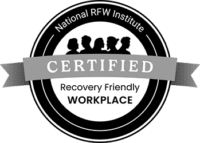Reigniting Your Passion to Practice this Doctor’s Day
 By Steve Lazoritz, MD, Medical Director, GoMo Health
By Steve Lazoritz, MD, Medical Director, GoMo Health
As a practicing pediatrician for the past 40+ years, Doctor’s Day sparks my thoughts regarding Dr. Crawford Long, the great physician who so largely facilitated the creation of this day to recognize the hard work of all physicians.Dr. Long was a quiet country doctor from Georgia. During his time in Philadelphia, he noticed that young socialites recreationally inhaled gases such as sulphuric ether to induce euphoria. During one such “ether frolics”, Long observed a participant take a heavy fall but display no indication of pain. He began to experiment with sulfuric ether as an anesthetic and performed his first surgical procedure using the gas on March 30, 1842, when he painlessly removed a tumor from the neck of a student named James Venable.
Doctor’s Day was first observed in 1933, 90 years after sulfuric ether was first used during surgery, to commemorate this landmark in medicine and to express appreciation for the lifesaving work of doctors everywhere. In 1990, President George H. W. Bush recognized the numerous contributions of physicians by formally designating March 30 as National Doctors’ Day.
Dr. Long married Caroline Swain in 1842 and had twelve children. During the Civil War he served as a surgeon to soldiers on both sides of the conflict. Throughout his professional career, Long was strongly convinced of his calling to serve humanity. He said that his profession was a “ministry from God” and that “his highest ambition was to do good and leave the world better by his labors.”
Today’s Medicine
Clearly, medicine has changed greatly since the days of Dr. Long. But how did we go from medicine being a “ministry from God” to our present state with 44% of physicians reporting burnout, which is an exhausted state of unresolved job stress?
While technologic and scientific breakthrough have advanced our ability to diagnose and treat medical disorders, practicing medicine has been and always will be a stressful job, requiring long hours and great responsibility. I have no doubt that while Dr. Long worked very hard, he was sometimes conflicted with his work and his family and frustrated with his lack of control over outcomes.
What is it about the practice of medicine today that has resulted in an epidemic of burnout? Dr. Long worked for himself and was driven solely by the altruistic demands of his practice. He did not worry about RVUs, EMRs, MCOs, CMS, and countless other acronyms which now control how a physician practices medicine. Dr. Long did not start practicing with huge medical school debt and neither had to deal with prioritizations from payors nor lawsuits for honest mistakes or poor outcomes.
The practice of medicine is based on concern for the patient’s wellbeing and developing an empathetic relationship with them. Practice models such as direct primary care, with the reduction of insurance and other paperwork, allow physicians to spend more time with the satisfying parts of practice – the actual practice of medicine. Additionally, the use of technology, including remote care coordination resources like message-based platforms and video visits, can now be used to augment live visits to educate, communicate, motivate and activate patients, adding to the satisfaction and joy of medical practice.
On March 30th we celebrate Dr. Long’s great accomplishment in alleviating human suffering. Perhaps we should also learn from his philosophy of making medicine “his highest ambition was to do good and leave the world better by his labors,” and search for ways to recharge our own passion in practicing medicine.







Find Us Online